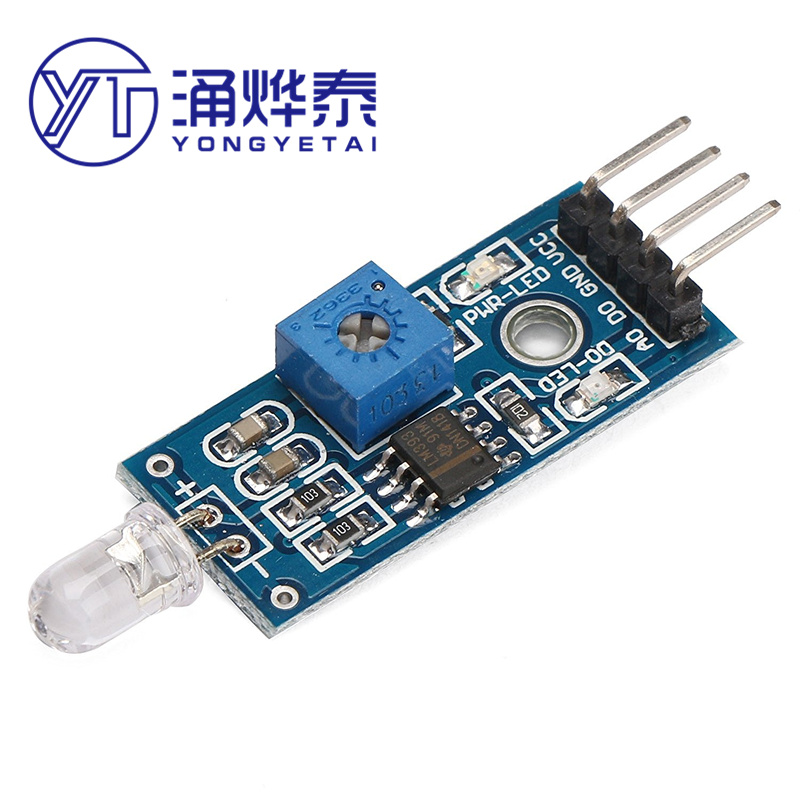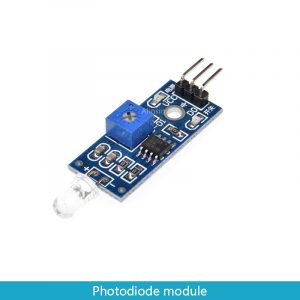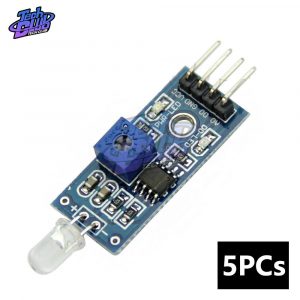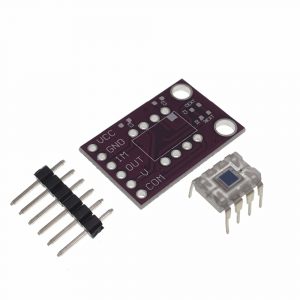Description
- DIY Supplies: ELECTRICAL
- Model Number: standard

use:
Light brightness detection, light brightness sensor, directional, only senses the light source directly in front of the sensor, for better light finding effect
Module features:
1 It can detect the brightness and light intensity of the surrounding environment (compared with the photoresistor, the directionality is better, and the light source in the fixed direction can be perceived)
2 Sensitivity adjustable (blue digital potentiometer adjustment in the figure)
3 working voltage 3.3V-5V
4 Output form: DO digital switching output (0 and 1) and AO analog voltage output
5 Fixed bolt holes for easy installation
6 small board PCB size: 3.2cm * 1.4cm
Instructions for use
1 Photodiode module is most sensitive to ambient light intensity. It is generally used to detect the brightness and light intensity of the surrounding environment. In most cases, it can be used with the photoresistor sensor module. The difference between the two is that the photodiode module has good directionality and can be perceived. A fixed direction light source.
2 When the module has no light condition or the light intensity does not reach the set threshold, the DO port outputs a high level. When the ambient light intensity exceeds the set threshold, the module D0 outputs a low level;
3 small-plate digital output D0 can be directly connected with the single-chip microcomputer, and the high-low level is detected by the single-chip microcomputer, thereby detecting the change of the light intensity of the environment;
4 small board digital output DO can directly drive our relay module, which can form a photoelectric switch;
5 Small-plate analog output AO can be connected to our AD module. Through AD conversion, you can get more accurate values of ambient light intensity.













Reviews
There are no reviews yet.